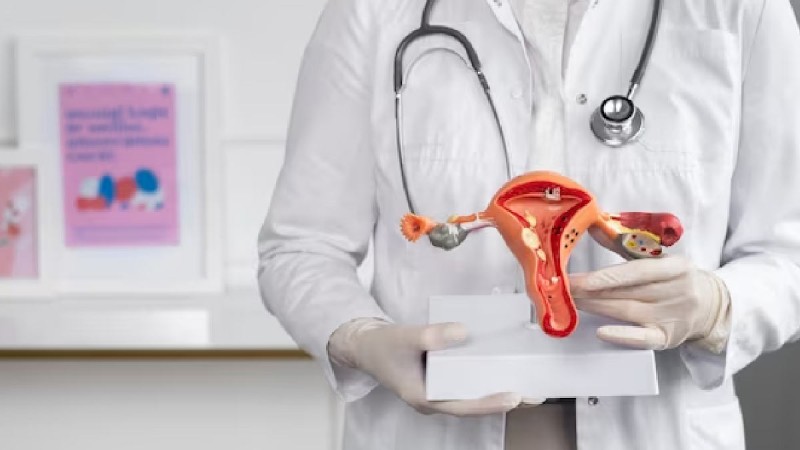
Cervical cancer, a formidable adversary affecting women globally, can be effectively thwarted through proactive measures, with experts unanimously advocating vaccination as a potent weapon in this battle. In this comprehensive exploration, we will delve into the intricacies of cervical cancer, the role of human papillomavirus (HPV), the power of vaccination, and expert opinions on the optimal age for intervention.
Human papillomavirus (HPV) stands as the chief culprit behind cervical cancer, underscoring the significance of recognizing its role in the initiation and progression of this devastating disease. HPV, a prevalent virus, manifests in various types, with some strains posing a higher risk for cervical cancer.
Cervical cancer often advances silently, with symptoms remaining elusive until advanced stages. The silent progression underscores the necessity for early detection and prevention strategies, making vaccination a crucial component in the fight against this insidious disease.
Vaccination against HPV has emerged as a powerful preventive tool, offering protection against the virus and, consequently, reducing the risk of cervical cancer. Various vaccines target different HPV strains, contributing to a comprehensive defense mechanism.
Determining the most effective age for administering the vaccine is pivotal in maximizing its impact. Experts weigh in on this crucial aspect, examining the benefits of introducing the vaccine during pediatric years, adolescence, and young adulthood.
Commencing vaccination during pediatric years offers the advantage of long-term protection. Vaccination at this stage establishes a robust immune response, providing a shield against HPV infections that may occur later in life.
Adolescents and young adults represent a critical demographic for cervical cancer prevention. Administering the vaccine during this phase ensures timely protection before potential exposure to HPV, a factor that significantly enhances its effectiveness.
Dr. Smith, a distinguished oncologist specializing in women's health, provides valuable insights into the impact of vaccination on cervical cancer rates. Dr. Smith emphasizes the role of vaccination not only in preventing the disease but also in reducing the overall burden on healthcare systems by curbing the incidence of cervical cancer.
Nurse Rodriguez, with extensive experience in women's health, offers a frontline perspective on the implementation of vaccination programs. Drawing on her experiences, Nurse Rodriguez highlights the importance of community engagement and education in ensuring the success of vaccination initiatives.
Despite the proven efficacy of cervical cancer vaccines, misconceptions and myths persist. It is crucial to address and debunk these fallacies to promote informed decision-making and acceptance of vaccination as a preventive measure.
Common myths include concerns about vaccine safety, misconceptions about the target population, and unfounded beliefs about long-term side effects. By providing accurate information, healthcare professionals can dispel these myths and build trust in vaccination.
Ensuring the safety of vaccines is paramount in fostering public trust. Rigorous safety measures, including extensive clinical trials and ongoing monitoring, are in place to guarantee the safety and efficacy of cervical cancer vaccines. Highlighting these measures helps alleviate concerns and instills confidence in the vaccination process.
Community outreach plays a pivotal role in promoting vaccination acceptance. Tailored initiatives that engage communities, address specific concerns, and provide accessible information contribute significantly to the success of vaccination programs. Collaborative efforts between healthcare providers, community leaders, and educators enhance the reach and impact of such initiatives.
Educational campaigns serve as powerful tools in raising awareness about cervical cancer, the importance of vaccination, and dispelling myths. Leveraging various media channels, educational campaigns can reach a broad audience, empowering individuals to make informed decisions regarding their health. Success stories and testimonials can be integrated into these campaigns to create relatable narratives.
Challenges related to the accessibility and affordability of vaccines must be addressed for widespread implementation. Disparities in healthcare access can hinder vaccination efforts, particularly in low-resource settings. Collaborative efforts between governments, non-profit organizations, and pharmaceutical companies are essential to ensure equitable access to cervical cancer vaccines.
Cultural factors can influence the acceptance of vaccination. Understanding and respecting cultural nuances are crucial in designing vaccination programs that are culturally sensitive. Engaging local leaders, community influencers, and religious figures can help bridge cultural gaps and foster acceptance.
While vaccination is a powerful preventive measure, it is not a standalone solution. Regular screening practices, such as Pap smears, remain vital for early detection and intervention. Combining vaccination with routine screenings enhances the overall effectiveness of cervical cancer prevention efforts.
Empowering women through education on cervical health fosters a proactive approach to prevention. Comprehensive health education programs should cover topics such as the importance of vaccination, routine screenings, and overall well-being. By empowering women with knowledge, they become active participants in their healthcare journey.
In conclusion, preventing cervical cancer through vaccination is a collective responsibility that involves individuals, healthcare providers, and policymakers. Embracing this responsibility ensures a healthier future for women worldwide. The integration of vaccination into comprehensive women's health initiatives, coupled with ongoing education and advocacy, creates a robust framework for combating cervical cancer on multiple fronts.
Only 7 days left, these 5 cars are available at a discount of up to Rs 50 thousand
Hyundai Creta EV seen during testing, new design details revealed